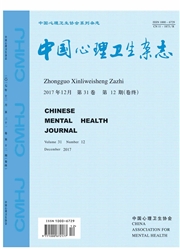

 中文摘要:
中文摘要:
轻度认知功能损害(MCI)是介于正常老化和老年期痴呆之间的过渡阶段,其识别是预防和延缓老年期痴呆的一个突破口.本文首先回顾了近年来研究人员从临床问诊、神经心理测查、影像分析以及生化标记4个维度开展的MCI识别工作,对单维识别各自的优势和劣势进行了分析,指出有效的MCI诊断模型需要将多种技术和手段相结合.进而提出多维识别的核心理念,旨在强调指标的有效性、可获取性以及互不重叠的原则.最后提出基于社区的MCI筛查理想模型,包含大样本初筛、疑似人群细筛及诊断后的监控和干预3部分.
 英文摘要:
英文摘要:
Mild cognitive impairment (MCI) is one transitional phase between normal aging and age-relat- ed dementia, and the early detection of MCI is the key point for preventing and postponing the disease process of dementia. This article reviewed recent studies on MCI detection from clinical scales, neuropsychological tests, neuro- imaging, and biomarkers dimensions. Each dimension has its advantages and disadvantages in practical screening, and the effective detection model is needed to combine multiple techniques and strategies. The core concept of mul- tiple-dimensional detection involves the effectiveness, accessibility, and non-overlap rules of markers. Furthermore, an ideal community-based model for MCI detection was proposed, which included three phases, initial large-sample screening, re-screening for suspected ones, and the monitoring and intervention after diagnosis.
 同期刊论文项目
同期刊论文项目
 同项目期刊论文
同项目期刊论文
 期刊信息
期刊信息
